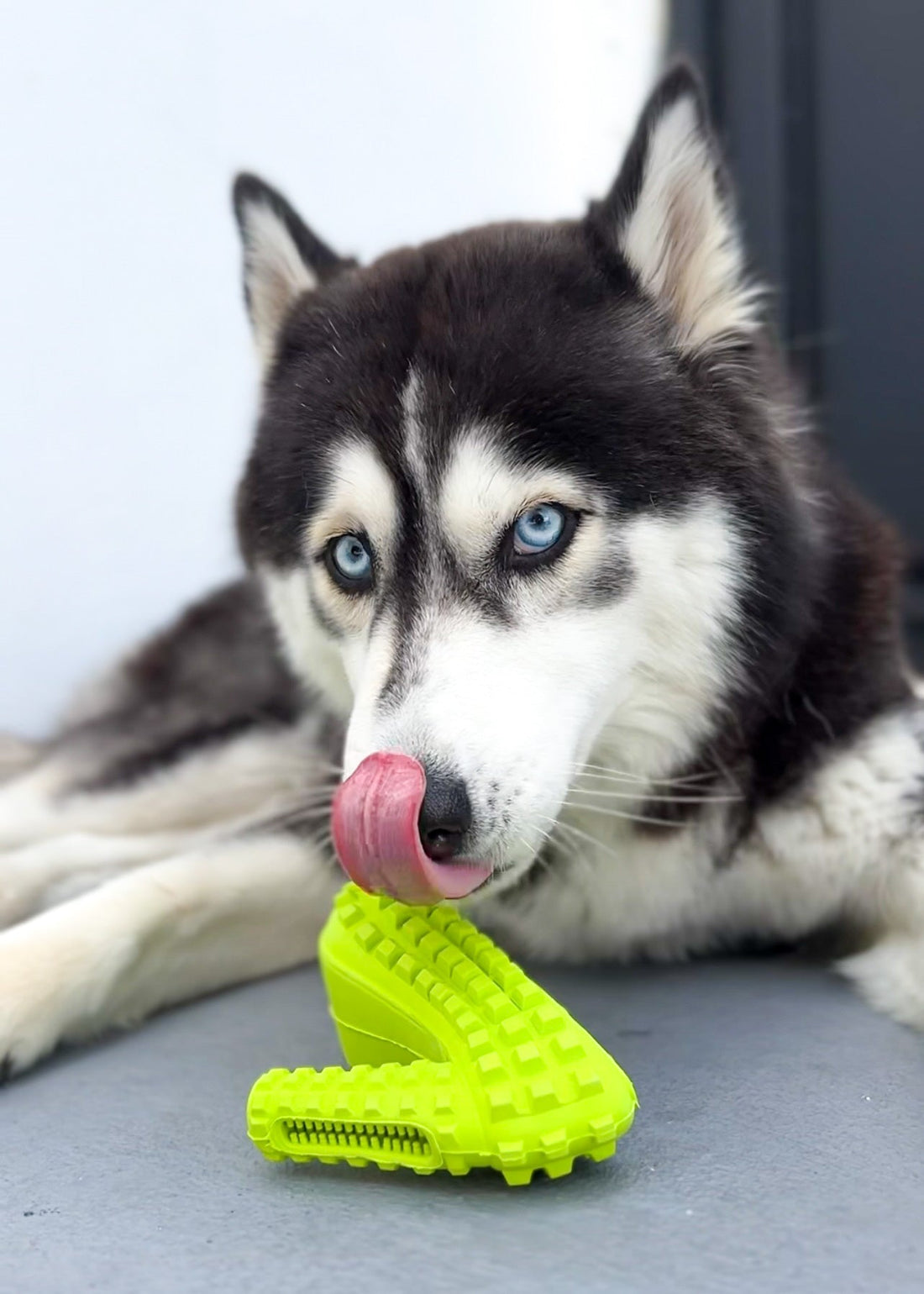Training your puppies is essential to ensure they are well-behaved and obedient. It requires patience, consistency, and a lot of time and effort. However, the rewards of a well-trained dog are invaluable. In this article, we will discuss 10 tips for effectively training your puppy.
Start early
The benefits of starting your puppy's training early are numerous. Early training helps puppies develop better social skills, leading to improved behavior and a deeper bond between you and your furry friend.
As puppies are like sponges, they are more receptive to learning new things. Starting with basic commands like "sit", "stay", "come", and "heel" will create a solid foundation for more advanced training in the future. By practicing these commands consistently every day, you will reinforce good behavior and promote obedience.
To make the training process more enjoyable for both you and your puppy, it is essential to reward them with praise, treats, or toys when they follow an order. This positive reinforcement will keep your puppy motivated and eager to learn more.
Positive reinforcement
Is one of the most important aspects of training your puppies and dogs. Using positive reinforcement, you can encourage your furry companions to behave in a way that meets your expectations. Whether you're teaching them to sit, stay still, or come when called, positive reinforcement is a proven method for achieving success.
There are several ways to use positive reinforcement in your training sessions. One of the most popular methods is to offer your puppies or dogs a treat when they perform the desired behavior. This can range from a small piece of kibble to a tasty cookie. You can also use toys or praise to reinforce good behavior.
It's important to remember that positive reinforcement should be used consistently throughout the training process. This means you should reward your puppies and dogs every time they display the desired behavior. Over time, they will begin to associate the behavior with the reward, and it will be more likely that they will repeat it in the future.
Although positive reinforcement is a highly effective training method, it's important to avoid physical punishment or negative reinforcement. These methods can instill fear and aggression in your puppies and dogs, which can cause more harm than good. Instead, continue using positive reinforcement and watch your furry friends thrive under your guidance.
Consistency
When it comes to training your puppy, consistency is indeed key. Using the same commands repeatedly reinforces the lessons you want your pet to learn.
This also helps them to develop good habits that will stay with them for life. It's important to ensure that everyone in the household is on the same page when it comes to training your dog.
In this way, there will be no confusion and contradictory signals that could cause your pet to become confused or disobedient. Training your dog can take time and patience, but with consistent effort, you can establish expectations that your pet will understand and be able to follow.
Socialization
This is a crucial aspect of raising a happy and well-behaved dog. It's essential to expose your furry friend to various environments, people, and animals from an early age. Socialization helps your dog develop social skills, allowing them to interact with others confidently.
When dogs are not adequately socialized, they can develop behavioral issues such as aggression or anxiety, which can make them difficult to handle. Therefore, it's essential to start socializing your dog as soon as possible. A helpful tip is to introduce your dog to new people, places, and things gradually.
This will help your dog feel more comfortable and less overwhelmed. Remember to maintain a positive attitude and reward your dog for its good behavior during socialization sessions. With patience and consistency, you can help your dog become a well-adjusted and confident member of society.
Patience
Training your puppies and dogs is an important ongoing process that requires patience, diligence, and consistency. While it's important to have realistic expectations for your furry friends, it's also important to remember that each dog is unique and will have their own learning pace. However, with patience and consistent training, you can help them reach their full potential and become well-behaved and obedient companions.
An important aspect to remember when training your dog is to break the process down into small, manageable steps. This will help your dog understand what you're asking of them and build their confidence as they progress. It's also important to use positive reinforcement techniques, such as treats and praise, to encourage good behavior and make the training process more enjoyable for your dog.
Another key aspect of training is to establish clear boundaries and rules for your puppy to follow. This can include things like not jumping on people, not barking excessively, and not getting on furniture. By setting clear expectations and consistently enforcing them, you can help your dog understand what is expected of them and avoid confusion or frustrations.
Remember, training your dog is a journey, not a destination. It requires time.
Short sessions
When it comes to training puppies and dogs, it's important to keep in mind that they have relatively short attention spans. This means that if your training sessions are too long, your furry friend may become bored or distracted and lose interest in what you're trying to teach them.
To avoid this, it's best to aim for shorter, more frequent training sessions spread throughout the day. So, instead of doing one long session, try breaking it up into several shorter sessions that last between 5 and 10 minutes each. This way, your puppy will be more engaged and focused on the task, allowing them to learn and retain new information more effectively over time.
Exercise
Regular exercise is essential for the physical and mental well-being of your puppy. It's crucial for promoting healthy development and preventing the onset of many diseases. Exercise also helps your pet burn off excess energy and reduces stress and anxiety, which can lead to behavioral issues.
In addition to walking and playing fetch, you can also consider other activities such as hiking, swimming, or agility training. These activities can provide additional mental stimulation and help build a stronger bond between you and your pet. Remember, a well-exercised dog is a happy dog!
Leash Training
Leash training is an essential aspect of training your puppy. It's important to introduce them to the leash in a positive way, so they associate it with positive experiences rather than fear or anxiety. One way to do this is to put the leash on your dog while they're inside the house, allowing them to get used to the feeling without the additional distractions of the outside world. Once they're comfortable with this, you can start taking them on short outdoor walks, allowing them to explore their surroundings while still on the leash.
As your dog becomes more comfortable with the leash, you can gradually increase its length, giving them more freedom to explore while still maintaining control. It's important to be patient and consistent throughout this process, rewarding your dog with positive reinforcement each time they walk calmly on the leash.
In addition to using positive reinforcement, it can also be helpful to use a training collar or harness to assist with leash training. These tools can help reinforce good behavior on the leash while providing a more comfortable and secure fit for your dog.
Remember, leash training is a process that requires time and patience, but with consistent effort, your dog will learn to walk calmly and confidently by your side.
Supervision
This is a critical aspect of dog training. Keeping a watchful eye on your puppy at all times, especially during the initial stages of training, can help prevent accidents and reinforce positive behavior.
This could involve observing your dog's reactions to different stimuli, identifying potential triggers for undesirable behaviors, and responding accordingly. Additionally, it's important to create a safe and comfortable environment for them, which may involve making modifications to your home or outdoor space. By taking a proactive approach to dog training and ensuring your puppy feels secure and supported, you can help them become happy and well-mannered pets that are a pleasure to have around.
Professional Training
If you find yourself struggling to train your puppy, it may be in your best interest to consider seeking the services of a professional dog trainer. By doing so, you can benefit from the expertise of someone who has dedicated their life to studying canine behavior and training techniques.
Furthermore, a professional trainer can provide you with the guidance and support you need to succeed in your efforts, as well as personalized training plans that cater to your dog's specific needs. This will not only help you achieve your goals more efficiently but also ensure your dog receives the most effective and humane training possible. So, whether you're having trouble with obedience training, behavioral issues, or another aspect of dog training, don't hesitate to turn to a professional trainer for help.
Conclusion
Training your puppy requires patience, consistency, and a lot of effort. However, the rewards of a well-trained dog are incredible. By following these 10 tips, you can effectively train them and develop a strong bond with them.

